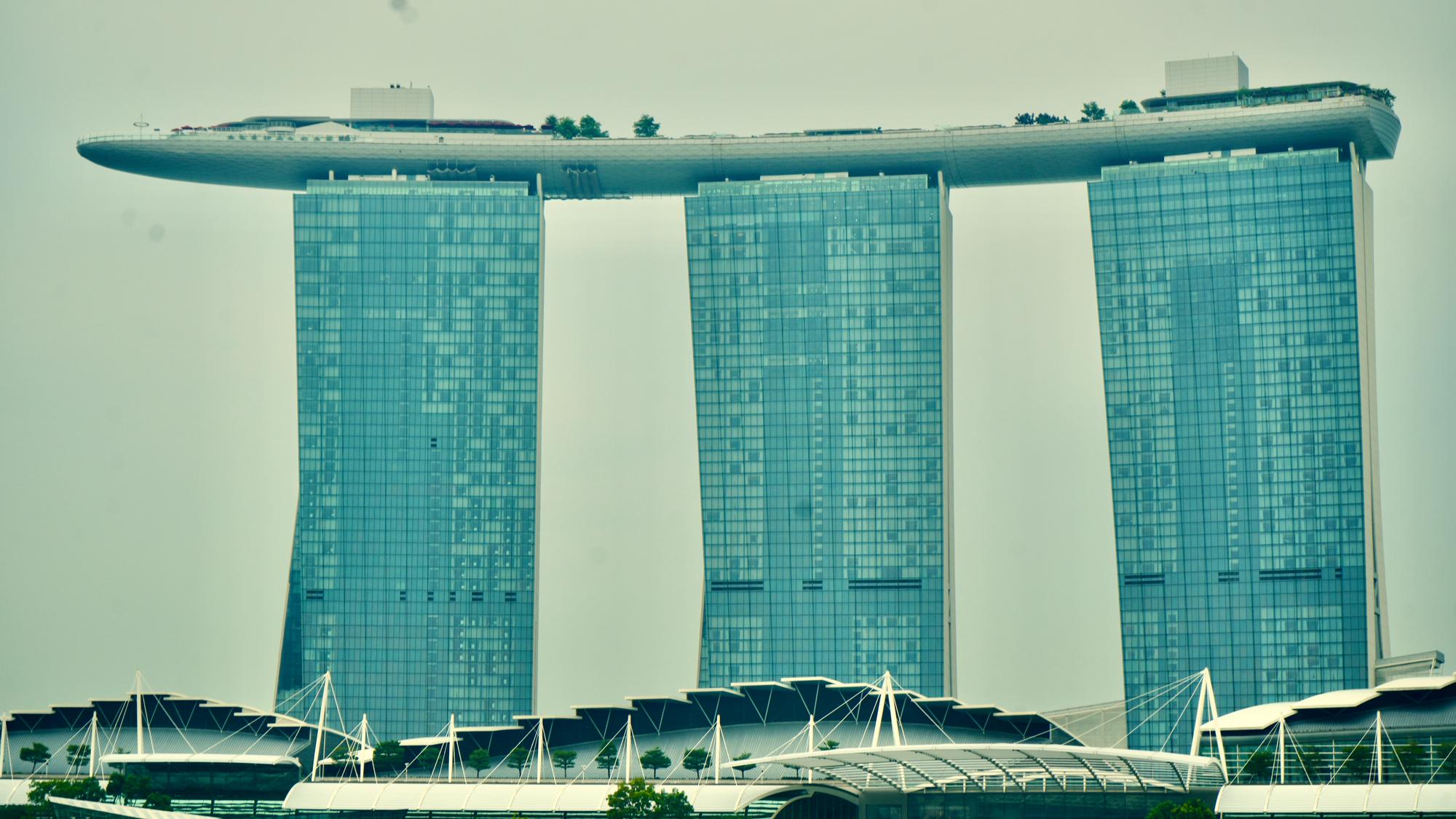Singapore
A Unique City-State
The Marina Bay commercial complex has become Singapore's most iconic symbol of this small country's success. Marina Bay contains a hotel, many restaurants, high-end retail stores, a large food court, a quasi-Viennese gondola canal, and a rooftop restaurant and observation deck. The total area of Singapore is half the size of Rhode Island, America's smallest state, which is similar to the area of the New York City metropolitan area. There are many expensive high-rise apartment buildings. It is home to a wonderful botanical orchid garden and arguably the world's most extravagant airport.
Singapore, located at the tip of the Malaysian peninsula, was an important port in the maritime spice trade, being first inhabited by Portuguese traders, followed by the Dutch, and finally by the British in the early 19th century. Singapore was occupied by the Japanese during World War II. After the war, it came back under British control until it merged with Malaya in 1963. Malaya added "si" to symbolize the addition of Singapore. However, racial tensions between the Malays and Singaporean Chinese caused Malaysia to expel Singapore from the union. Singapore thus became an independent nation in 1965.
We had a lecturer on the ship who proclaimed that Singapore offers two examples of individuals who single-handedly changed history. Those two are Stamford Raffles and Lee Kuan Yew.
Beginning in 1818, Stamford Raffles was a regional governor of the Singapore territory for the British. He negotiated with the Dutch that for an exchange of territory the Dutch would give up all claims to Singapore. At that time there were only a few thousand residents of Singapore. Raffles invited Chinese, Malay, and Indian workers to mine tin and perform other needed jobs to support the British. Many of those workers remained in Singapore, never returning to their home countries. In a few years, the population of Singapore grew to over 100 thousand. Raffles established the tradition of Singapore welcoming all nationalities and religions.
Lee Kuan Yew was prime minister of Singapore beginning with the 1963 union with Malaya until 1990. When Singapore was expelled by Malaysia from its union in 1965, Yew immediately joined the United Nations. He invited international investors and industries to set up shop in Singapore under favorable tax conditions. Yew’s leadership turned Singapore into an economic giant. Yew’s programs in Singapore had a profound effect on the Communist leadership in China, who made a major effort, especially under Deng Xiaoping to emulate his policies of economic growth, entrepreneurship, and subtle suppression of dissent. Over 22,000 Chinese officials were sent to Singapore to study its methods.
At least twenty years ago on my first transit through Singapore, I met my “brother from a different mother” Rick Smith. Besides being a great guitarist, Rick totally integrated into the Singapore music scene. He is married to a lady from Taiwan, and having lived in the Orient for over three decades, he speaks fluent Mandarin. We were able to spend some quality hours together, including having lunch together and visiting his apartment. There was no distance despite our not having seen each other for at least a decade…just good friends happy to see each other.
Click on the small box next to the Photo Gallery line to view all the Singapore photos.

0 Comments on Singapore
Join the Conversation